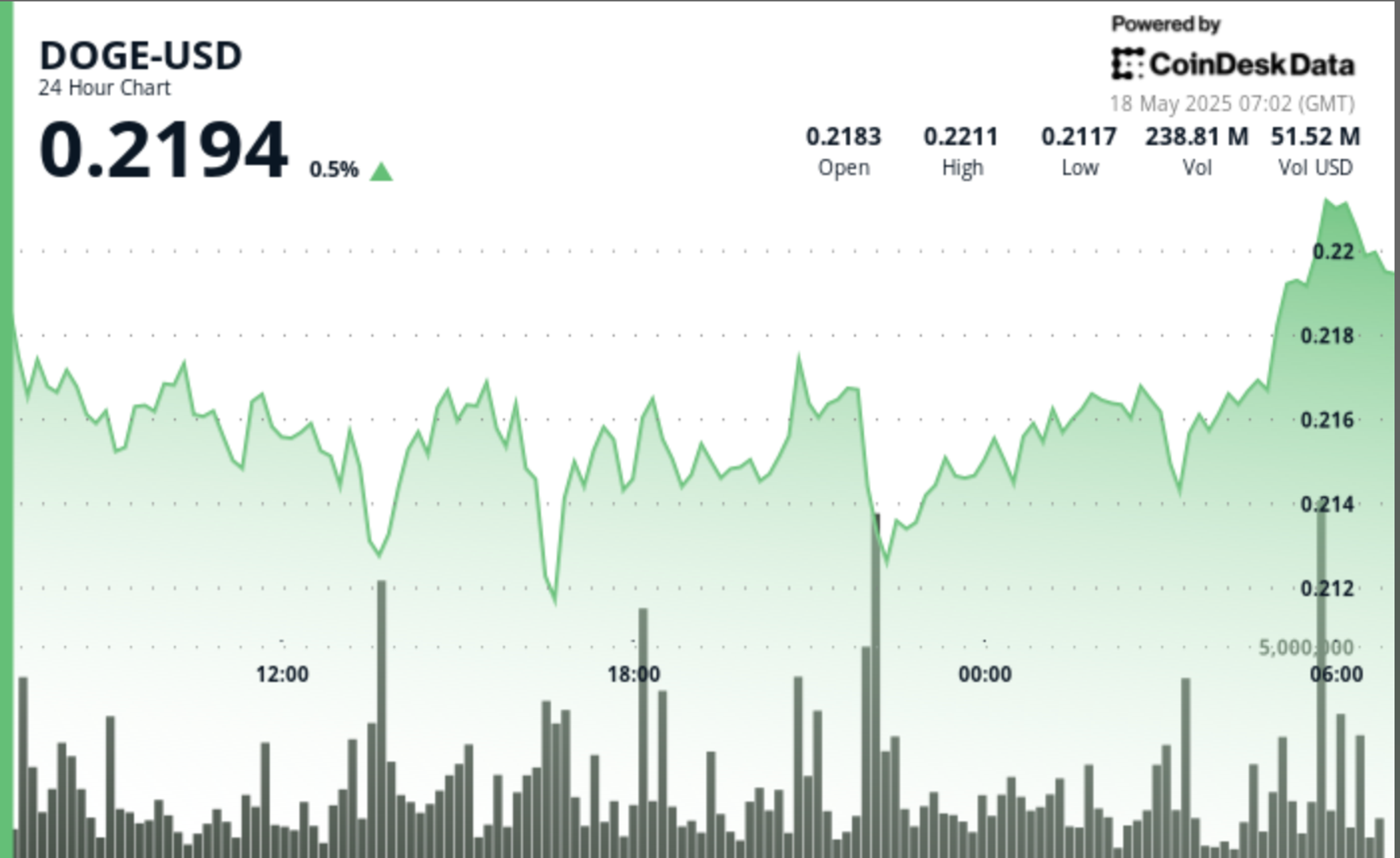Uncategorized
MoonPay’s Ivan Soto-Wright Bets on a Non-Custodial, API-First Future for Crypto

As the crypto space consolidates, MoonPay is quietly becoming the infrastructure layer for the next wave of Web3.
With over 30 million verified users across 160 countries and a fully licensed global stack, the company is enabling everything from fiat onramps to embedded DeFi experiences.
Originally launched to make wallet top-ups seamless via Apple Pay and debit cards, MoonPay now powers API-first solutions used by nearly every major DeFi app.
“We started with a simple question, how do you top up your wallet?” MoonPay’s CEO and co-founder Ivan Soto-Wright told CoinDesk in an interview. Now it’s about giving developers the tools to bring crypto into everyday life.
Ivan Soto-Wright is speaking on the main stage at Consensus 2025, in Toronto on May 15.
The company is pushing toward a fully API-driven, «headless» infrastructure model, where developers can plug MoonPay into their products just like Stripe.
Helio, one of MoonPay’s recent acquisitions, underscores this trajectory. Moonpay acquired the Solana-powered crypto payment processor in January, for a reported $175 million.
Despite its size and reach, MoonPay still operates with a startup mentality. With only 300 employees, the team is «execution-first» and relentlessly focused on efficiency. The company saw 112% year-on-year growth, with Q1 2025 marking its strongest quarter ever.
MoonPay primarily earns via transaction fees on crypto purchases through debit cards, Venmo, and Apple Pay. But it’s experimenting with zero-fee trading products like “Balance,” which allows users to deposit cash and trade instantly.
Soto-Wright is a well-known entrepreneur and investor, and is a member of the Milken Institute Fintech Advisory Council.
Prior to MoonPay, he was CEO and co-founder of smart money app Saveable. He started his career at London-based investment firm Redington.
CoinDesk: What trends do you see emerging in crypto?
Soto-Wright: “DEXs will overtake CEXs, with users demanding control over their assets but expecting the smooth UX of a centralized platform.»
«MoonPay’s ethos is that more crypto transactions should be peer-to-peer, taking advantage of decentralized exchanges. We’re seeing a general shift from CeFi to DeFi, with decentralized exchanges currently dominating 30% of the market. I see this trend continuing to shift over time – DeFi is global and ultimately reduces friction and costs by cutting out the middleman.”
How do you expect the wallet market to develop?
“Cryptocurrency wallets will eventually replace bank accounts. Users will have multiple wallets, like you and I have a number of bank accounts now. MoonPay provides the mission-critical infrastructure to power these wallet experiences, both from our MoonPay Widget product and APIs.”
Does MoonPay plan to make more acquisitions in the near term?
“M&A is a huge growth driver to our business. We view it as an accelerator to help us move quickly and bring more products to market. A big part of our M&A strategy is identifying the right companies to help achieve our vision for the future of payments. An example of this is Helio, which unlocked our ability to power crypto commerce for merchants.»
“We’re always open to M&A,” Soto-Wright said, noting that past acquisitions have been cash-flow positive from day one. “It’s about speed, scaling by acquiring great teams with a sharp founder mindset.”
What features do customers want, better UX?
A central theme for MoonPay is the shift from custodial to non-custodial finance. “We believe crypto should be non-custodial first,” said the company’s CEO.
To facilitate this shift, MoonPay is developing what it calls the “CEX experience in a DeFi environment.” That means abstracting away the complexity of DeFi —wallets, UTXOs, compliance — into easy-to-integrate SDKs and widgets. “Think of it like packaging up the convenience of a centralized exchange and putting it into your own wallet.”
What does the future have in store for MoonPay?
While not yet confirmed, a MoonPay stablecoin could be in the pipeline.
“We’re taking our time, but you can see the early signs in Balance. Eventually, there could be a stablecoin.”
READ MORE: Why MoonPay and PayPal Partnered to Expand Crypto Adoption in the U.S.
Disclaimer: Parts of this article were generated with the assistance from AI tools and reviewed by our editorial team to ensure accuracy and adherence to our standards. For more information, see CoinDesk’s full AI Policy.
Uncategorized
XRP Price Surges After V-Shaped Recovery, Targets $3.40

Global economic tensions and regulatory developments continue to influence XRP’s price action, with the digital asset showing remarkable resilience despite recent volatility.
After experiencing a significant dip to $2.307 on high volume, XRP has established an upward trajectory with a series of higher lows, suggesting continued momentum as it approaches resistance levels.
Technical indicators point to a potential bullish breakout, with multiple analysts highlighting critical support at $2.35-$2.40 that must hold for upward continuation.
Technical Analysis Highlights
- Price experienced a 3.76% range ($2.307-$2.396) over 24 hours with a sharp sell-off at 16:00 dropping to $2.307 on high volume (77.9M).
- Strong support emerged at $2.32 level with buyers stepping in during high-volume periods, particularly during the 13:00-14:00 recovery.
- Asset established upward trajectory, forming higher lows from the bottom, with resistance around $2.39 tested during 07:00 session.
- In the last hour, XRP climbed from $2.358 to $2.368, representing a 0.42% gain with notable volume spikes at 01:52 and 01:55.
- Price surged past resistance at $2.36 to reach $2.366, later establishing new local highs at $2.369 during 02:03 session on substantial volume (539,987).
- Currently maintaining strength above $2.368 support level with decreasing volatility suggesting potential continuation of upward trajectory.
Disclaimer: This article was generated with AI tools and reviewed by our editorial team to ensure accuracy and adherence to our standards. For more information, see CoinDesk’s full AI Policy. This article may include information from external sources, which are listed below when applicable.
External References
- «XRP price path to $3.40 remains intact — Here is why«, Cointelegraph, published May 16, 2025.
- «XRP Price Watch: Bulls Eye $2.60 as Long-Term Trend Holds«, Bitcoin.com News, published May 17, 2025.
- «XRP Price Explosion To $5.9: Current Consolidation Won’t Stop XRP From Growing«, NewsBTC, published May 17, 2025.
Uncategorized
SUI Surges After Finding Strong Support at $3.75 Level

Global economic tensions and shifting trade policies continue to influence cryptocurrency markets, with SUI showing particular resilience.
The asset established a trading range of 4.46% between $3.70 and $3.86, finding strong volume support at the $3.755 level.
A notable bullish momentum emerged with price surging 1.9% on above-average volume, establishing resistance at $3.850.
The formation of higher lows throughout the latter part of the day suggests consolidation above the $3.775 support level.
Technical Analysis Highlights
- SUI established a 24-hour trading range of 0.165 (4.46%) between the low of 3.700 and high of 3.862.
- Strong volume support emerged at the 3.755 level during hours 17-18, with accumulation exceeding the 24-hour volume average by 45%.
- Notable bullish momentum occurred in the 20:00 hour with price surging 7.2 cents (1.9%) on above-average volume.
- Resistance established at 3.850 with higher lows forming throughout the latter part of the day.
- Decreasing volatility in the final hours suggests consolidation above the 3.775 support level.
- Significant buyer interest appeared between 01:27-01:30, forming a strong support zone at 3.756-3.760 with exceptionally high volume (over 300,000 units per minute).
- Decisive bullish reversal began at 01:42, establishing a series of higher lows and higher highs.
- Breakout above 3.780 occurred at 01:55, followed by consolidation near 3.785 with decreasing volume.
Disclaimer: This article was generated with AI tools and reviewed by our editorial team to ensure accuracy and adherence to our standards. For more information, see CoinDesk’s full AI Policy. This article may include information from external sources, which are listed below when applicable.
External References
- «Sui price up 5.16% intra-day: bullish structure remains strong«, crypto.news, published May 16, 2205.
- «SUI Set to Explode, But Don’t Sleep on XRP and Other Altcoins«, CoinPedia, May 16, 2025.
Uncategorized
Dogecoin (DOGE) Whales Accumulate 1 Billion DOGE Amid Critical Support Formation

Geopolitical tensions and evolving trade policies continue to influence cryptocurrency markets, with Dogecoin showing resilience amid broader economic uncertainty.
Despite macroeconomic headwinds, DOGE has maintained support above key moving averages while forming a potential bull flag pattern that could target $0.35 if validated by continued buying pressure.
Technical Analysis Highlights
- DOGE experienced significant volatility with a 4.3% range (0.211-0.220) over the past 24 hours, forming a key support zone around 0.212 validated by high volume rebounds at 13:00 and 22:00.
- The price action reveals a bullish recovery pattern from the 16:00 low, with resistance emerging at 0.217-0.220.
- The 20:00 candle’s strong volume surge above the 24-hour average confirms renewed buying interest, suggesting potential upward momentum if DOGE can maintain its position above the established support level.
- In the past hour, DOGE has demonstrated significant bullish momentum, climbing from 0.215 to 0.216 with notable volume spikes at 01:17, 01:21, and 01:54-01:55.
- The price established a strong support zone around 0.215 during the early minutes, followed by a decisive breakout at 01:16-01:17 where volume surged over 8 million.
- The uptrend continued with higher lows forming a clear ascending pattern, culminating in a new resistance test at 0.216-0.217 range.
- The final minutes saw particularly heavy trading activity with volumes exceeding 7 million at 02:01-02:02, confirming strong buyer interest and suggesting potential for further upside movement.
Disclaimer: This article was generated with AI tools and reviewed by our editorial team to ensure accuracy and adherence to our standards. For more information, see CoinDesk’s full AI Policy. This article may include information from external sources, which are listed below when applicable.
External References
- «Dogecoin Eyes $0.35 as Whale Accumulation Signals Bull Flag Breakout«, The Crypto Basic, published May 16, 2025.
- «Dogecoin Hovers at $0.22 Following Weeks of Gains, Analysts Share Mixed Outlooks«, NewsBTC, published May 17, 2025.
-

 Fashion7 месяцев ago
Fashion7 месяцев agoThese \’90s fashion trends are making a comeback in 2017
-

 Entertainment7 месяцев ago
Entertainment7 месяцев agoThe final 6 \’Game of Thrones\’ episodes might feel like a full season
-

 Fashion7 месяцев ago
Fashion7 месяцев agoAccording to Dior Couture, this taboo fashion accessory is back
-

 Entertainment7 месяцев ago
Entertainment7 месяцев agoThe old and New Edition cast comes together to perform
-

 Business7 месяцев ago
Business7 месяцев agoUber and Lyft are finally available in all of New York State
-

 Sports7 месяцев ago
Sports7 месяцев agoPhillies\’ Aaron Altherr makes mind-boggling barehanded play
-

 Entertainment7 месяцев ago
Entertainment7 месяцев agoDisney\’s live-action Aladdin finally finds its stars
-

 Sports7 месяцев ago
Sports7 месяцев agoSteph Curry finally got the contract he deserves from the Warriors





